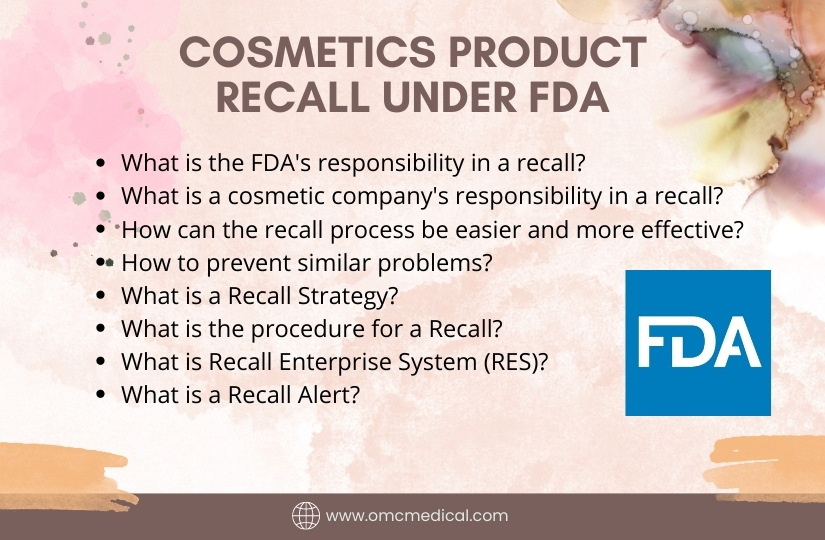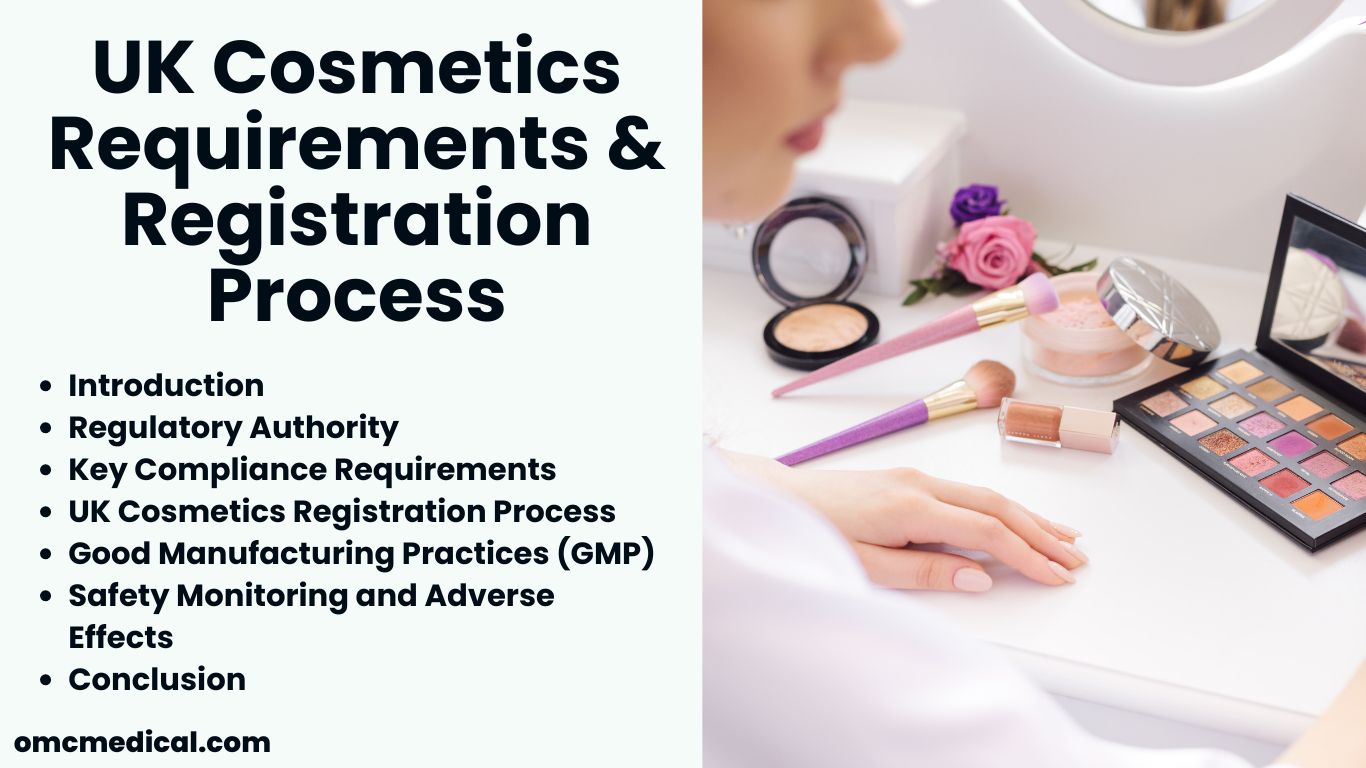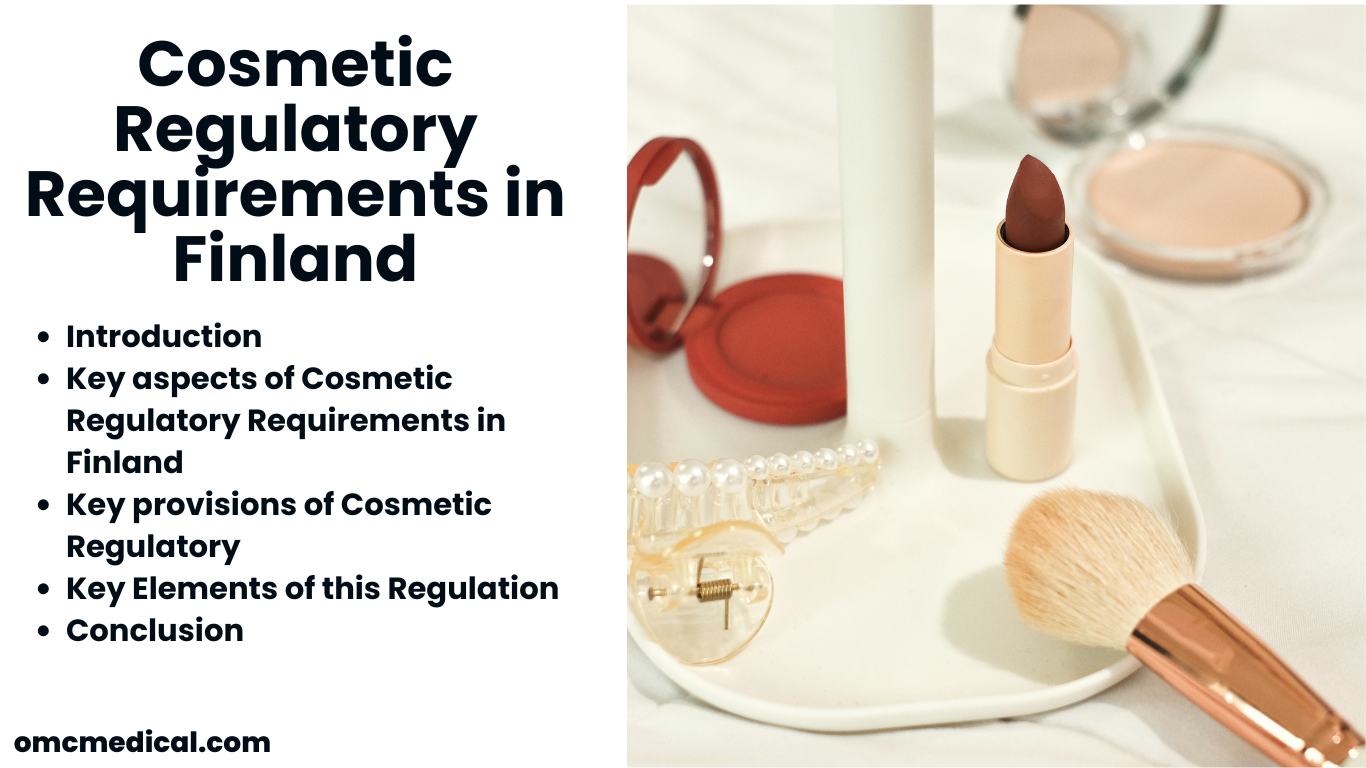Title 21 of the Code of Federal Regulations (CFR), section 7.3(g), describes a recall as a firm’s removal or correction of a marketed product that FDA judges to be in violation of the laws we administer and against which the FDA would start legal action, such as seizure.
FDA strongly advises businesses to familiarise themselves with all of the regulations, including the elements of a recall strategy, in 21 CFR Part 7.
What is the FDA’s responsibility in a recall of Cosmetics Product?
The FD&C Act does not give FDA the authority to mandate the recall of a cosmetic product, but it does give FDA the authority to request a company to do so. They do, however, actively participate in recalls.
- The FDA keep track of recall developments. They may perform their own audit inspections at wholesale or retail customers in addition to examining company status reports to ensure the recall’s efficacy.
- The FDA determines the level of the health risk posed by a product under recall and assigns a classification to represent that risk:
- Class I: There is a foreseeable risk that using or being exposed to a prohibited cosmetics product may have grave implications for one’s health or result in death.
- Class II – Where there is a remote chance that using or being exposed to a contraband product will result in transitory or medically treatable adverse health effects.
- Class III: No adverse consequences to health is posed by using or being exposed to a contraband product.
- The FDA or the company may issue a public notification if it determines that it is necessary. The FDA will publish a press statement if the company declines or unreasonably postpones doing so. The FDA Enforcement Report, a weekly publication that includes details on all recalls for which classification has been assigned, is another way that FDA disseminates broad information on recalls.
- If FDA requests a recall, they create a suggested plan for each recall that specifies how the Agency wants it to be executed and whether a press statement is required. The FDA will analyse and offer comments on the firm’s recall strategy if one is developed.
- The FDA guarantees that the product is either destroyed or properly refurbished.
What is a cosmetics product company’s responsibility in a recall?
The following is what the company is required to do in accordance with 21 CFR Part 7:
- Customers should be notified by the company. According to 21 CFR 7.49, the notification’s format, content, and scope should be appropriate for the risk the product poses and the recall plan that was created for it.
- When a recall is announced, the company must inform the relevant FDA district office.
- Periodic recall status updates should be sent by the company to the relevant FDA district office so that the FDA can monitor the recall’s development.
- If the company or FDA decides that a public warning is essential, they should submit a statement to that effect along with a distribution strategy for FDA’s assessment and feedback.
- The business must carry out effectiveness checks in accordance with 21 CFR 7.42(b) (3).
- Whether the recalled product is destroyed or brought into compliance, the corporation oversees how it is handled.
How can the recall process be easier and more effective?
The simplest method to reduce the workload associated with product recalls is to thoroughly avoid product adulteration and misbranding in the first place. However, by being ready in advance, businesses can reduce the damage in the event that a recall is required.
- Keep a backup plan in place in case a recall needs to be started in accordance with the recall rules.
- Give numbers to production lots or batches. Law does not mandate lot numbers for cosmetics product. But it enables you to decide if some or all cosmetics products lots need to be recalled. Since it will probably be impossible to pinpoint the exact production runs implicated if the items don’t have lot numbers, it might be required to recall every cosmetics product currently on the market.
- Keep proper distribution data to make it easier to find recalled cosmetics products. Keep them around for longer than the product’s expected shelf life and utilise.
How to prevent similar problems?
The corporation should take the kind of remedial efforts that stop a similar issue from happening in the future, in addition to the corrective actions of withdrawing a violative product from the market and either destroying it or bringing it into compliance.
- Identify the cause of the violation,
- Decide what adjustments need to be made to prevent the issue from occurring again
- Execute such modifications
When conducting an inspection in connection with a recall, an FDA inspector may check for these factors.
FAQs
What is a Recall Strategy?
A recall strategy is a predetermined course of action to be followed in carrying out a given recall, considering the scope of the recall, the requirement for public warnings, and the extent of effectiveness checks.
Recalling firm refers to the company that requests a recall or, in the case of a recall requested by the FDA, the company that oversees the production and marketing of the recalled product.
What is the procedure for a Recall?
1. Initiation of a Recall. Includes voluntary, and non-voluntary recalls.
2. Identification of the Action as a Recall; Classification; and Strategy. By determining that the action satisfies the requirements of a recall under 21 CFR 7.3(g)1 or the applicable definitions for recalls carried out under various regulatory or statutory authorities, FDA formalises the recall action. FDA evaluates the data, including the firm’s recall plan, determines the level of health risk the recalled product presents, and then classifies the recall in line with 21 CFR 7.41.
3. Notification and announcement to the public. FDA evaluates a company’s recall strategy and makes improvements, such as the publication of a public statement. FDA notifies the company of the recall’s categorization. The agency has the right to publish a recall statement on its own. Other federal and state government agencies, as well as international governments, receive recall information from FDA.
4. Recall monitoring and auditing. In order to make sure that the recall action has been successful, FDA designs and implements a recall audit plan.
5. Termination of a Recall. The FDA decides when to call off a recall.
What is Recall Enterprise System (RES)?
The FDA’s recall staff submits, updates, categorises, and ends recalls using the Recall Enterprise System (RES), an electronic data system. Safety Alerts for medical devices are also recorded using it. Stock recoveries and market withdrawals are typically not recorded in RES. However, divisions may be instructed by the Center Recall Unit (CRU) or OSPOP/DE/ROB to enter a specific market withdrawal into RES and to monitor and audit the action in the same way as a recall, if this is done in accordance with agency policy.
What is a Recall Alert?
Once the division recall coordinator is aware that a recall has been started and has the appropriate information, the division will send a recall alert via the RES within one working day. Additionally, alerts may be sent even before a recall has begun. A firm’s correction or removal, the cause of the recall, and the predicted categorization are all disclosed in the recall alert in order to inform the appropriate Center Recall Unit (CRU) and OSPOP/DE/ROB. Copy the division recall personnel where the production site or responsible firm is located for recalls where the responsible firm or manufacturing site is located outside the monitoring division.







